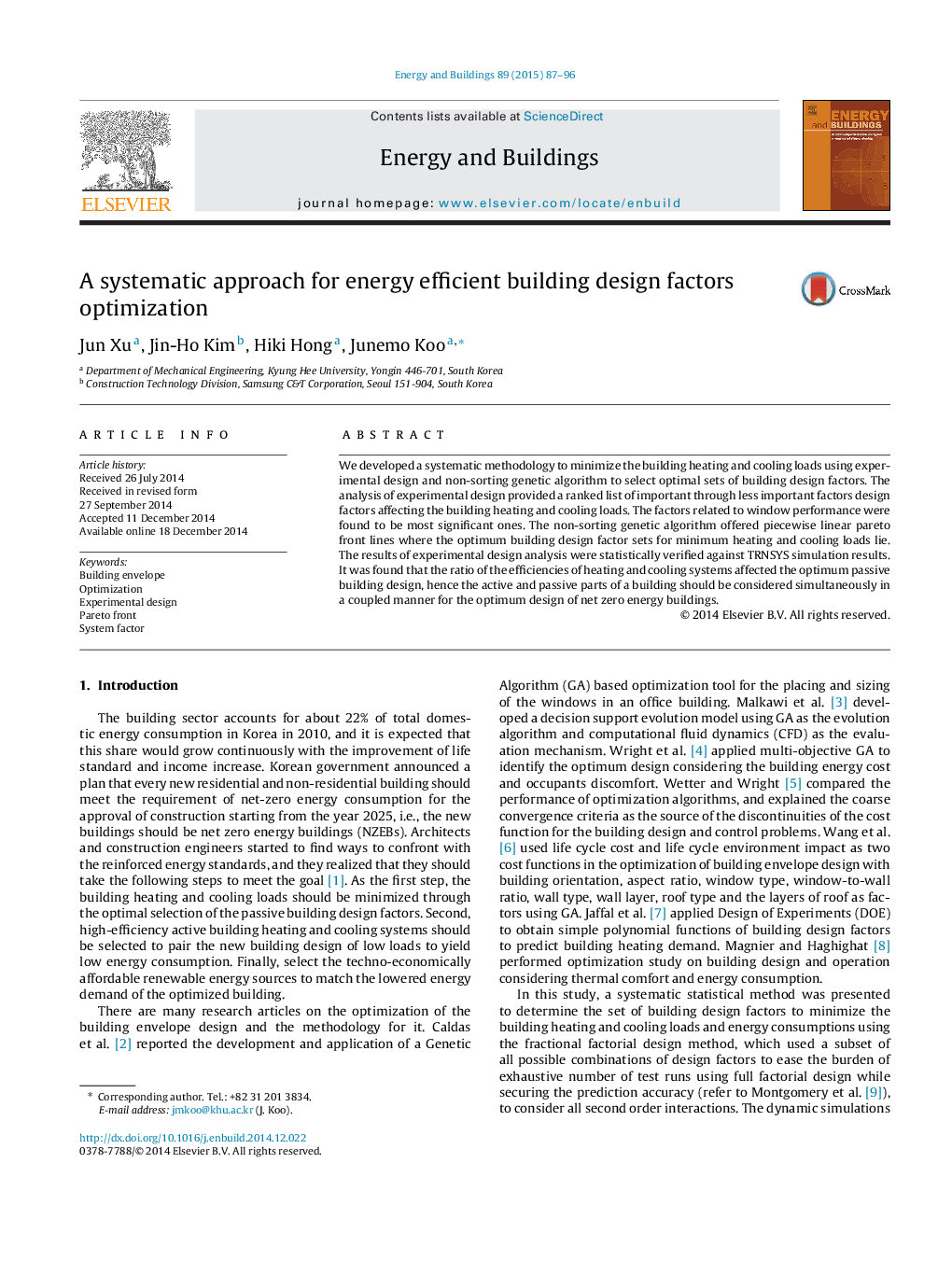| Article ID | Journal | Published Year | Pages | File Type |
|---|---|---|---|---|
| 262627 | Energy and Buildings | 2015 | 10 Pages |
•Experimental design was used to set relations between loads and design factors.•Pareto front lines were obtained for possible optimum points by genetic algorithm.•System factors of building active parts affects passive part optimum design.•Building active and passive parts should be optimized at once in a coupled manner.
We developed a systematic methodology to minimize the building heating and cooling loads using experimental design and non-sorting genetic algorithm to select optimal sets of building design factors. The analysis of experimental design provided a ranked list of important through less important factors design factors affecting the building heating and cooling loads. The factors related to window performance were found to be most significant ones. The non-sorting genetic algorithm offered piecewise linear pareto front lines where the optimum building design factor sets for minimum heating and cooling loads lie. The results of experimental design analysis were statistically verified against TRNSYS simulation results. It was found that the ratio of the efficiencies of heating and cooling systems affected the optimum passive building design, hence the active and passive parts of a building should be considered simultaneously in a coupled manner for the optimum design of net zero energy buildings.
